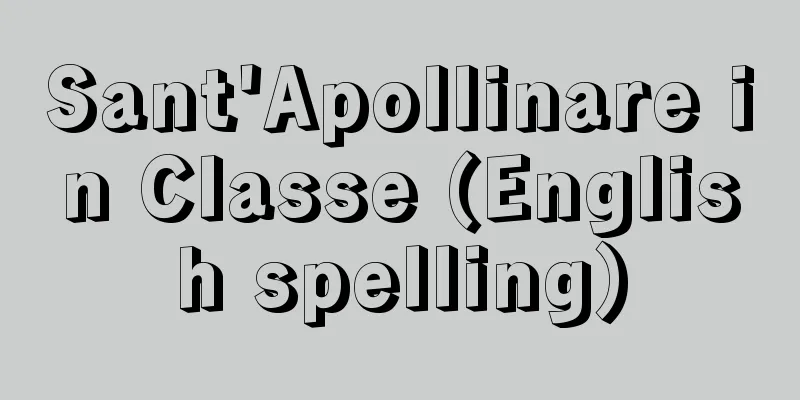Morie Ogiwara - Guardian of Ogiwara

|
A Meiji period sculptor. His pen name was Rokuzan. He was born in Nagano Prefecture on December 1, 1879. He attended Iguchi Kigenji's Kensei Gijuku, and in 1899 (Meiji 32) he moved to Tokyo with the aim of becoming a painter and studied at Fudosha, but in 1901 (Meiji 34) he went to America to study. In 1903 he went to France and studied under J.P. Laurens at the Academie Julian. He was deeply moved by seeing Rodin's "The Thinker" at the Salon the following year, and turned to sculpture. He returned to America and studied hard, then went back to France in 1906, joined the sculpture department of the Academie Julian, and visited Rodin. He returned to Japan in 1908 and submitted "Mongaku" and a work he had created in Europe to the second Bunten exhibition, but only "Mongaku" was selected and won third prize. The following year, he won third place at the 3rd Bunten Exhibition for his work "Portrait of Torakichi Hojo" (Important Cultural Property), but his fresh, lifelike forms, which he exhibited at Bunten and the Taiheiyo Gakai Exhibition, greatly stimulated the world of sculpture, which had been dominated by depictions of external forms since the days of the Kobu Bijutsu Gakko. He had a strong influence on many up-and-coming artists, including Tobarikogan, Nakahara Teijiro, Nakamura Tsune, and Hori Shinji, and with Ogiwara at the center, the Nakamuraya Group was formed by the husband-wife duo Soma Aizo and Kokko, with Tobari and Nakahara switching from painting to sculpture. He died suddenly on April 22, 1910, just two years after returning to Japan, but his last work, "Woman" (Important Cultural Property), won third place at the posthumous 4th Bunten Exhibition. His fresh forms, full of volume and a rich sense of life, along with Takamura Kotaro, opened the door to the modern era for the first time in Japanese sculpture. Ogiwara's posthumous works, which included oil paintings as well as sculptures, are housed and open to the public at the Rokuzan Museum of Art, which was built in Azumino City, Nagano Prefecture, overlooking the Alps. [Tamon Miki] "The Essence of Sculpture by Morie Ogiwara (revised and expanded edition of posthumous manuscripts, 1963, Chuokoron-Bijutsu Shuppan)" National Diet Library Guard Ogiwara Source: Shogakukan Encyclopedia Nipponica About Encyclopedia Nipponica Information | Legend |
|
明治の彫刻家。号碌山(ろくざん)。明治12年12月1日、長野県に生まれる。井口喜源治(きげんじ)の研成義塾に参加し、1899年(明治32)画家を志して上京、不同舎に学んだが、1901年(明治34)アメリカに留学。1903年フランスに渡り、アカデミー・ジュリアンでJ・P・ローランスに師事した。翌年のサロンでロダンの『考える人』を見て強く感動し、彫刻に転じた。いったんアメリカに戻り苦学したのち、1906年ふたたびフランスに渡り、アカデミー・ジュリアンの彫刻部に入り、ロダンを訪れた。1908年帰国し、第2回文展に『文覚(もんがく)』と滞欧作を応募したが『文覚』のみ入選し、三等賞を受賞した。翌年第3回文展で『北条虎吉像』(重要文化財)が三等賞を受けたが、文展や太平洋画会展に発表した生命感あふれる新鮮な造形は、工部美術学校以来の外形描写を主とする彫刻界に大きな刺激を与えた。そして戸張孤雁(とばりこがん)、中原悌二郎(ていじろう)、中村彝(つね)、堀進二ら多くの新進美術家に強い影響を及ぼし、荻原を中心に相馬愛蔵(そうまあいぞう)・黒光(こっこう)夫妻による「中村屋グループ」が形成され、戸張と中原は絵から彫刻に転じた。帰国後わずか2年後の明治43年4月22日に急死したが、死後の第4回文展で絶作『女』(重要文化財)は三等賞を受けた。充実した量塊に豊かな生命感をもつみずみずしい造形は、高村光太郎とともに、日本の彫刻に初めて本格的な近代の扉を開いた。彫刻のほか油絵も描いた荻原の遺作は、アルプスを望む生地、長野県安曇野(あづみの)市に建てられた碌山美術館に収蔵され、公開されている。 [三木多聞] 『荻原守衛著『彫刻真髄』(遺稿集の増補新版、1963・中央公論美術出版)』 国立国会図書館所蔵"> 荻原守衛 出典 小学館 日本大百科全書(ニッポニカ)日本大百科全書(ニッポニカ)について 情報 | 凡例 |
>>: Ogiwara Well Spring - Ogiwara Well Spring
Recommend
Alibi (English spelling)
Absence from the scene of the crime. A person susp...
Buoyancy
The force that acts on a material when the materi...
Devil Boy - Akuma-kun
...In the 1960s, against the backdrop of the obvi...
Lawson cypress
...Benihi (red cypress) C. formosensis Matsum. gr...
Exchange Member - Exchange Member
Under the Securities and Exchange Act, Japanese st...
Kabushi
It is a local dish that has been passed down for ...
Inuyama [city] - Inuyama
A city in northwestern Aichi Prefecture. It was in...
Kineya
...Today, some singers use this surname. It is al...
Motorists' hotel (English)
…In the United States, as motorization progressed...
Bhoja
...The Malwa region of the kingdom was a key tran...
Saneyuki Akiyama
Year of death: February 4, 1918 Year of birth: Mei...
Araki Ship
〘Noun〙 Foreign trade ship of Nagasaki red seal shi...
Cachexia
Among tumors, those called malignant tumors are c...
Ceratium hirundinella (English spelling) Ceratium hirundinella
...This species lives in plankton and is normally...
Abd al-Wahhab, M.
... Egyptian popular music developed in its own w...









